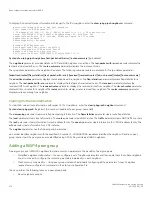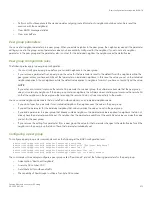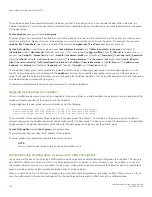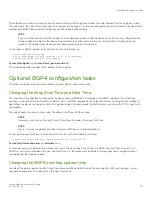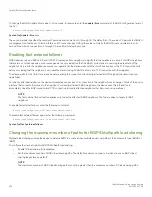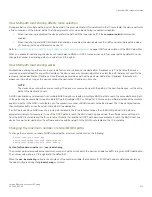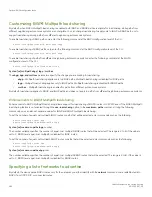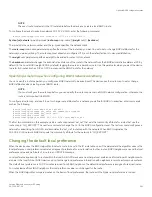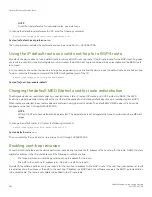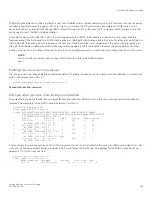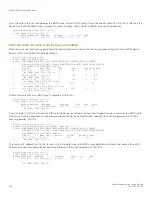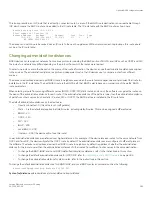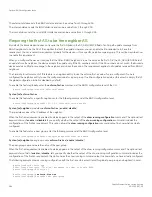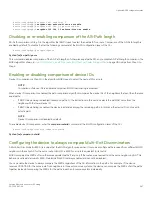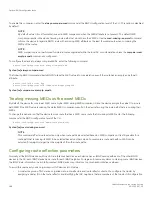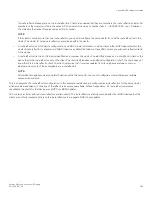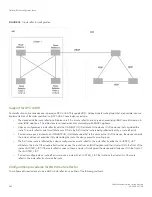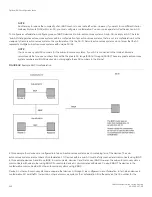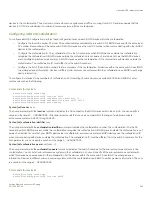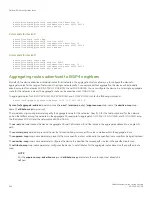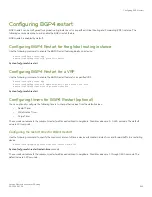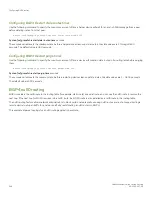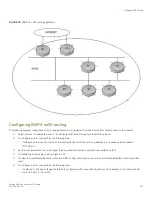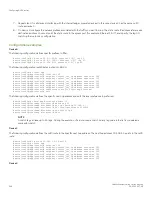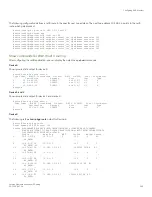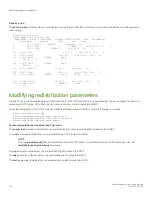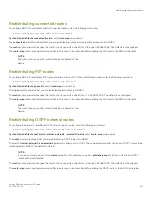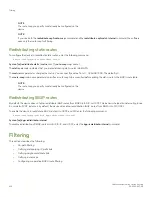
To enable this comparison, enter the
always-compare-med
command at the BGP4 configuration level of the CLI. This option is disabled
by default.
NOTE
By default, value 0 (most favorable) is used in MED comparison when the MED attribute is not present. The default MED
comparison results in the device favoring route paths that do not have their MEDs. Use the
med-missing-as-worst
command
to force the device to regard a BGP4 route with a missing MED attribute as the least favorable route, when comparing the
MEDs of the routes.
NOTE
MED comparison is not performed for internal routes originated within the local AS or confederation unless the
compare-med-
empty-aspath
command is configured.
To configure the device to always compare MEDs, enter the following command.
device(config-bgp-router)# always-compare-med
Syntax:
[no] always-compare-med
The following BGP4 command directs BGP4 to take the MED value into consideration even if the route has an empty as-path path
attribute.
device(config)# router bgp
device(config-bgp-router)# compare-med-empty-aspath
Syntax:
[no] compare-med-empty-aspath
Treating missing MEDs as the worst MEDs
By default, the device favors a lower MED over a higher MED during MED comparison. Since the device assigns the value 0 to a route
path MED if the MED value is missing, the default MED comparison results in the device favoring the route paths that are missing their
MEDs.
To change this behavior so that the device favors a route that has a MED over a route that is missing its MED, enter the following
command at the BGP4 configuration level of the CLI.
device(config-bgp-router)# med-missing-as-worst
Syntax:
[no] med-missing-as-worst
NOTE
This command affects route selection only when route paths are selected based on MED comparison. It is still possible for a
route path that is missing its MED to be selected based on other criteria. For example, a route path with no MED can be
selected if its weight is larger than the weights of the other route paths.
Configuring route reflection parameters
Normally, all the BGP4 devices within an AS are fully meshed. Since each device has an IBGP session with each of the other BGP4
devices in the AS, each IBGP device has a route for each IBGP neighbor. For large autonomous systems containing many IBGP devices,
the IBGP route information in each fully-meshed IBGP device may introduce too much administrative overhead.
To avoid this overhead, you can organize your IGP devices into clusters:
•
A cluster is a group of IGP devices organized into route reflectors and route reflector clients. You configure the cluster by
assigning a cluster ID on the route reflector and identifying the IGP neighbors that are members of that cluster. All configuration
Optional BGP4 configuration tasks
FastIron Ethernet Switch Layer 3 Routing
388
53-1003627-04
Summary of Contents for FastIron SX 1600
Page 2: ...FastIron Ethernet Switch Layer 3 Routing 2 53 1003627 04 ...
Page 16: ...FastIron Ethernet Switch Layer 3 Routing 16 53 1003627 04 ...
Page 20: ...FastIron Ethernet Switch Layer 3 Routing 20 53 1003627 04 ...
Page 142: ...FastIron Ethernet Switch Layer 3 Routing 142 53 1003627 04 ...
Page 150: ...FastIron Ethernet Switch Layer 3 Routing 150 53 1003627 04 ...
Page 200: ...FastIron Ethernet Switch Layer 3 Routing 200 53 1003627 04 ...
Page 214: ...FastIron Ethernet Switch Layer 3 Routing 214 53 1003627 04 ...
Page 350: ...FastIron Ethernet Switch Layer 3 Routing 350 53 1003627 04 ...
Page 476: ...FastIron Ethernet Switch Layer 3 Routing 476 53 1003627 04 ...
Page 588: ...FastIron Ethernet Switch Layer 3 Routing 588 53 1003627 04 ...

